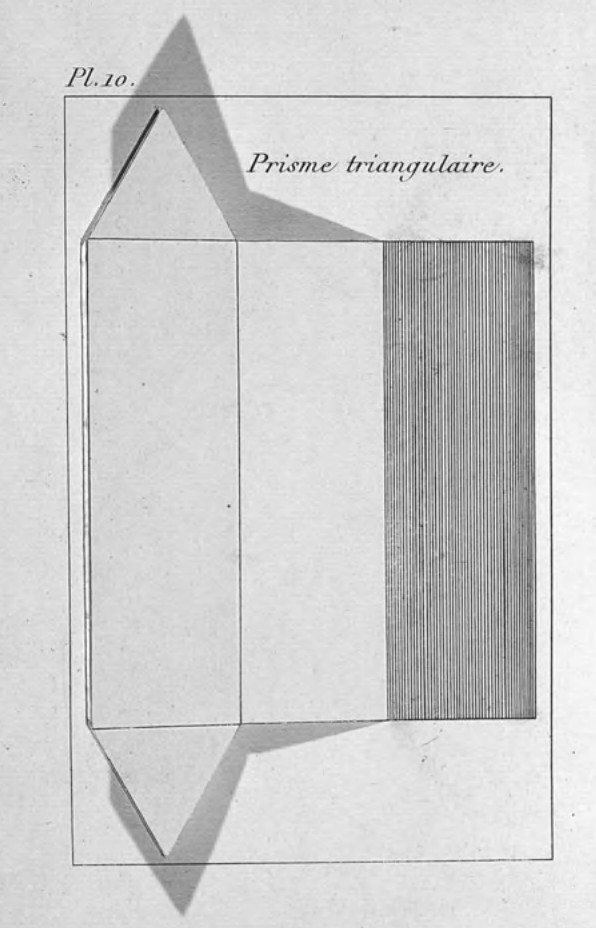Erwin Panofsky: Perspective as Symbolic Form (1927–) [DE, ES, EN]
Filed under book | Tags: · art, art history, art theory, geometry, image, optics, perspective, philosophy, theology

“Erwin Panofsky’s Perspective as Symbolic Form is one of the great works of modern intellectual history, the legendary text that has dominated all art-historical and philosophical discussions on the topic of perspective in the last century. This unrivaled example of Panofsky’s early method places him within broader developments in theories of knowledge and cultural change. Here, drawing on a massive body of learning that ranges over ancient philosophy, theology, science, and optics as well as the history of art, Panofsky produces a type of ‘archaeology’ of Western representation that far surpasses the usual scope of art historical studies.
Perspective in Panofsky’s hands becomes a central component of a Western “will to form,” the expression of a schema linking the social, cognitive, psychological, and especially technical practices of a given culture into harmonious and integrated wholes. He demonstrates how the perceptual schema of each historical culture or epoch is unique and how each gives rise to a different but equally full vision of the world. Panofsky articulates these distinct spatial systems, explicating their particular coherence and compatibility with the modes of knowledge, belief, and exchange that characterized the cultures in which they arose. Our own modernity, Panofsky shows, is inseparable from its peculiarly mathematical expression of the concept of the infinite, within a space that is both continuous and homogenous.”
First published in Vorträge der Bibliothek Warburg 1924-1925, Leipzig/Berlin: Teubner, 1927, pp 258-330.
Reprinted in Panofsky, Aufsätze zu Grundfragen der Kunstwissenschaft, eds. Hariolf Oberer and Egon Verheyen, 1974; Berlin 1992, pp 99-167.
English edition
Translated by Christopher S. Wood
Publisher Zone Books, New York, 1991
ISBN 0942299523, 9780942299526
196 pages
Review: E.H. Gombrich (NY Review of Books 1997).
Publisher (EN)
Die Perspektive als ‘symbolische Form’ (German, 1927/1980)
La perspectiva como forma simbolica (Spanish, trans. Virginia Careaga, 1973/2003)
Perspective as Symbolic Form (English, trans. Christopher S. Wood, 1991, no OCR)
Edoardo Rovida: Machines and Signs: A History of the Drawing of Machines (2013)
Filed under book | Tags: · drawing, engineering, geometry, history of science, machine, mechanics, science, technology

“This volume addresses the cultural, technical and ethical motivations of the history of drawing of machines and its developments step by step. First it treats drawings without any technical character; then the Renaissance with its new forms of drawing; the 18th century, with orthographic projections, immediately used by industry; the 19th century, including the applications of drawing in industry; and the 20th century, with the standardization institutions and the use of the computer. The role of historical drawings and archives in modern design is also examined.
This book is of value to all those who are interested in technical drawing, either from an artistic, from a design, or from an engineering point of view.”
Publiher Springer, 2013
Volume 17 of History of Mechanism and Machine Science series
ISBN 9400754078, 9789400754072
247 pages
Reviel Netz: The Shaping of Deduction in Greek Mathematics: A Study in Cognitive History (1999)
Filed under book | Tags: · geometry, history of mathematics, history of science, mathematics, science

“The aim of this book is to explain the shape of Greek mathematical thinking. It can be read on three levels: first as a description of the practices of Greek mathematics; second as a theory of the emergence of the deductive method; and third as a case-study for a general view on the history of science. The starting point for the enquiry is geometry and the lettered diagram. Reviel Netz exploits the mathematicians’ practices in the construction and lettering of their diagrams, and the continuing interaction between text and diagram in their proofs, to illuminate the underlying cognitive processes. A close examination of the mathematical use of language follows, especially mathematicans’ use of repeated formulae. Two crucial chapters set out to show how mathematical proofs are structured and explain why Greek mathematical practice manages to be so satisfactory. A final chapter looks into the broader historical setting of Greek mathematical practice.”
“This is, without contest, the most important book of science studies to appear since Shapin and Schaffer’s Leviathan and the Air-Pump.” (Bruno Latour in his review for Social Studies of Science)
Publisher Cambridge University Press, 1999
Volume 51 of Ideas in Context
ISBN 0521622794
327 pages
review (Nathan Sidoli, Educational Studies in Mathematics)
review (Jens Høyrup, Studia Logica)
review (Christian Marinus Taisbak, Mathematical Association of America)

